Write Us
We are just a call away
[ LET’S TALK AI ]
X
Discover AI-
Powered Solutions
Get ready to explore cutting-edge AI technologies that can transform your workflow!
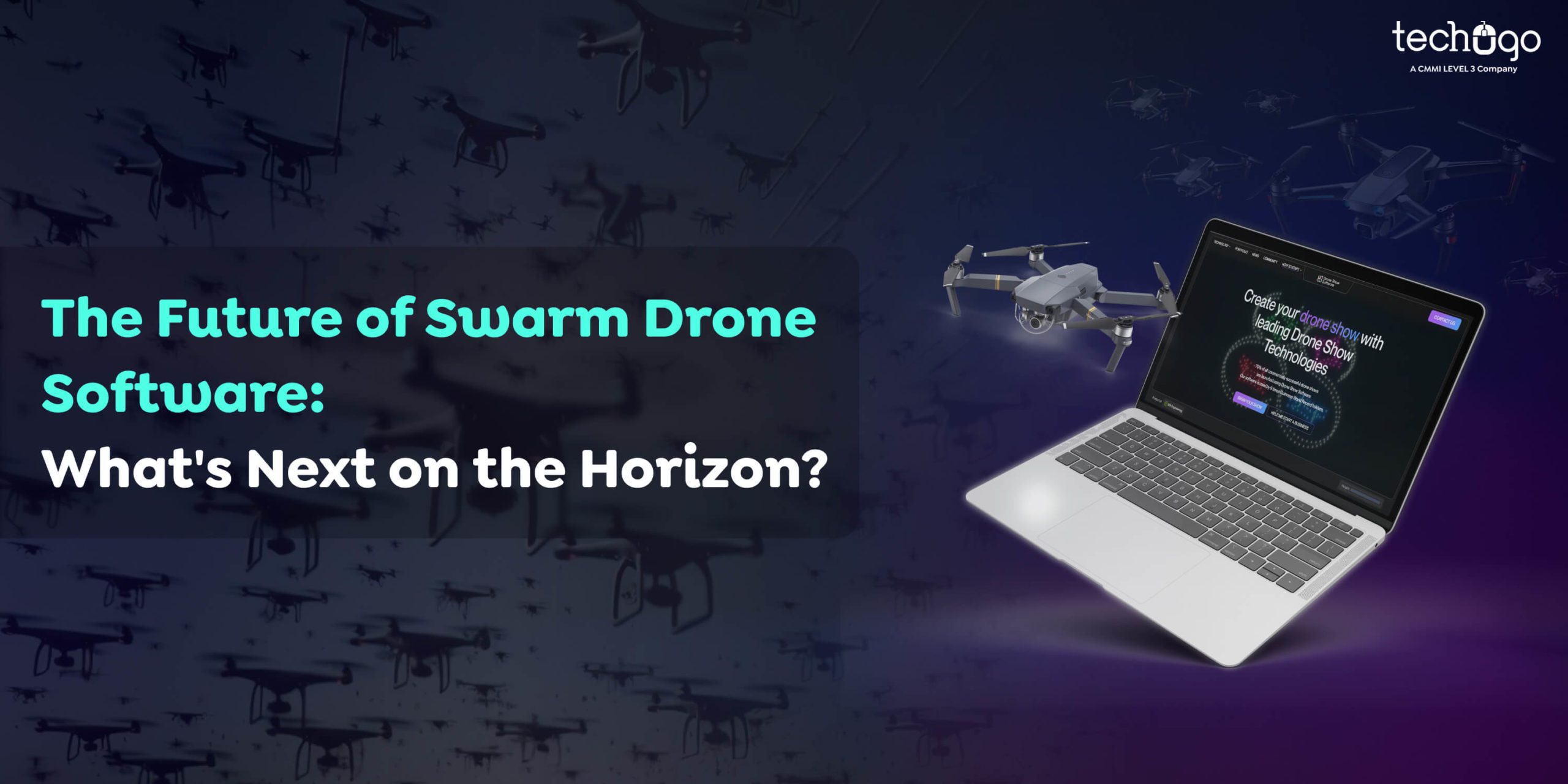
Researchers focus on uncrewed aerial vehicles (UAV swarms) because they are much more important than a single UAV. Many studies have focused on swarm drone software, but many have limitations. This guide will identify and organize relevant details to evaluate motion planning models, features, and techniques for a swarm so that you can seamlessly build an effective software development solution.
Moreover, it provides a current state-of-the-art understanding of UAV swarms and an overview of swarm intelligence (SI). There are many challenges to be faced; however, there is no need to be worried when you consider drone swarm software development with Techugo. We consider swarm intelligence, which offers unique contributions in diverse environments. Integrating our expertise and knowledge will provide a foundation for your practical and creative guidelines for motion planning issues. It also strengthens support for existing methods in real-time. Here is a perfect guide if you want to generate new marketing strategies and provide the basis for your future growth.
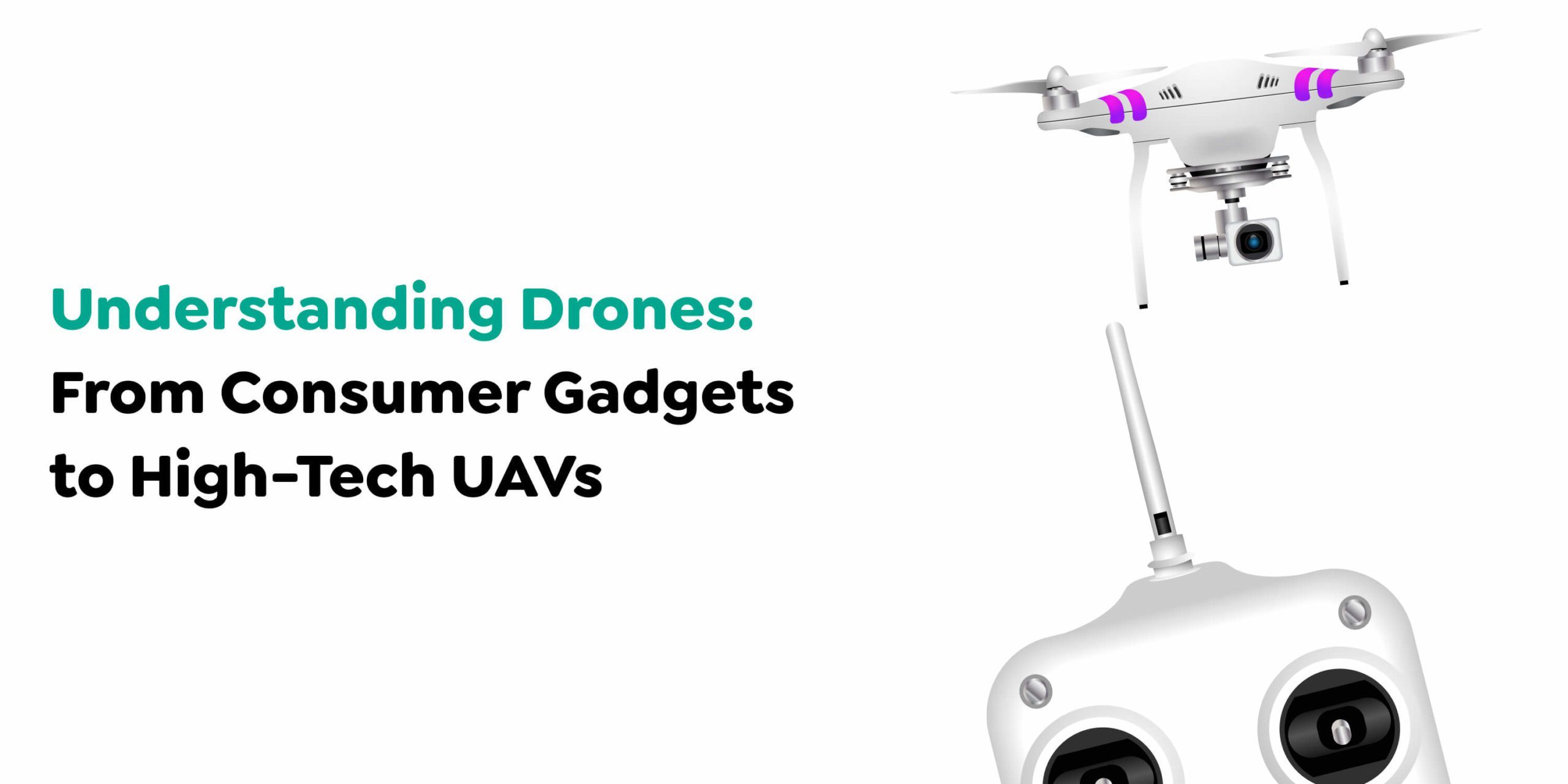
A flying drone is simply an aircraft without a pilot. It is also known as uncrewed air vehicles (UAVs). A pilot can control drones remotely; however, fully autonomous drones are still developing. Drones are safer and more affordable than manned military aircraft. Today, they are used for military purposes but are also available as consumer toys and commercial operational efficiency providers.
Although drones come in various sizes and shapes, their core components (batteries, motors, microcontrollers, and sensors) remain the same. Because drones are built with smartphone parts, investments in them over the past ten years have helped drive drone prices down, making them more accessible for consumers and businesses to make the most of aerial images.
Drones are smartphones that can fly and move. Unlike most fintech developments, such as big data and payment innovation, drone design software is valued for its combination of mobile hardware and internet connectivity. Drones are sensors distributed across the internet that make the web more intelligent. These devices can be used to develop different software and business models. Everything, from drone mapping to flight planning and insurance, has been created to help people resolve issues with drone app development.
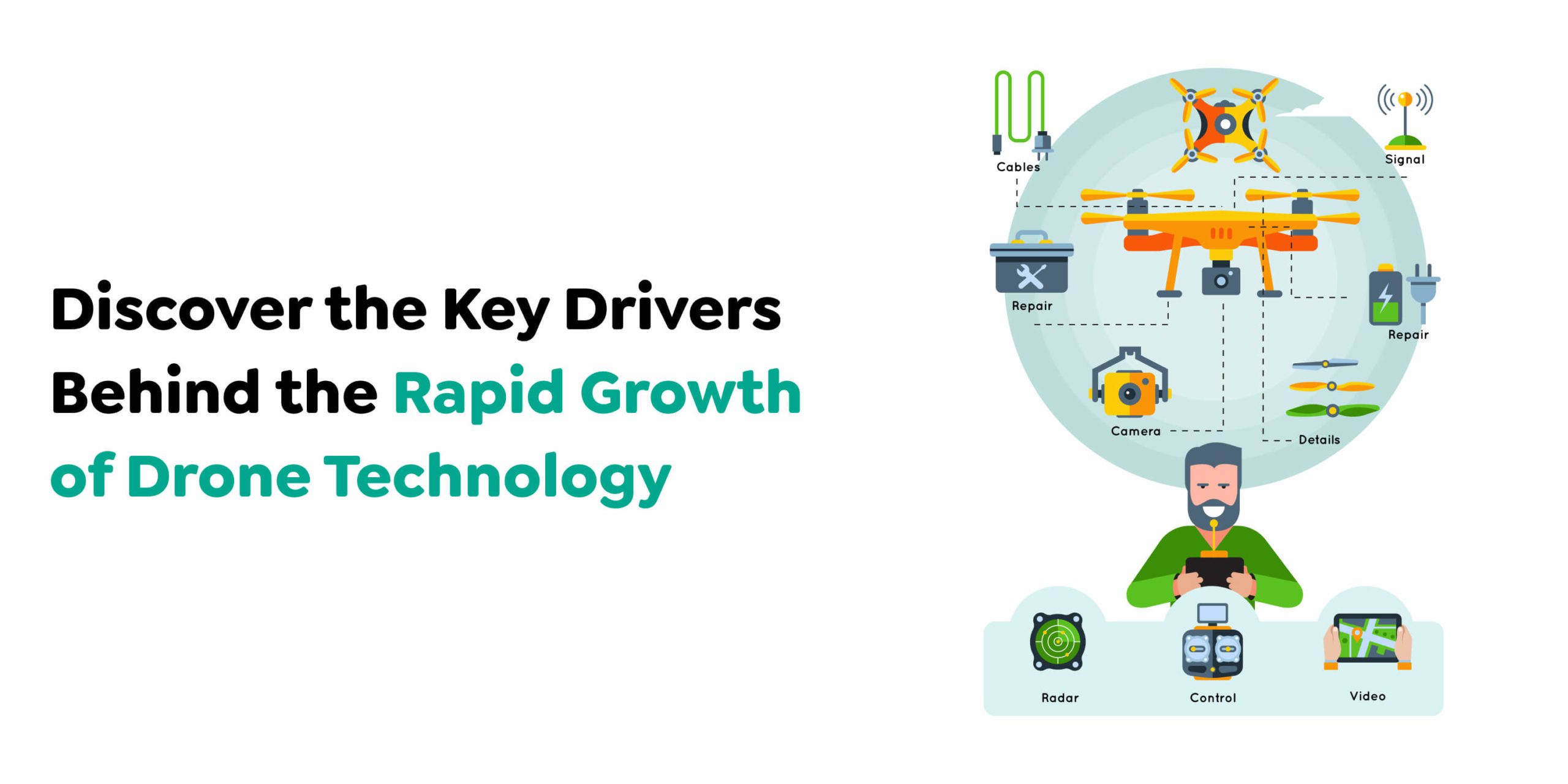
Drone technology is gaining immense popularity due to several key factors:
1. Advancements in Technology: New advancements in drone hardware infrastructure like sensors, cameras, and GPS systems have made drones more competent and dependable. Pocket-sized drones featuring prolonged battery function now exist, which makes them attainable for both consumers and industrial operations.
2. Versatility: Drone applications extend from agricultural operations through construction activities to logistics services and entertainment purposes. They also assist real estate scouts, supply surveillance abilities, and enhance disaster management operations. By accessing difficult-to-reach places and photographing aerial data, drones bring vast value to numerous industries.
3. Cost-Effective Solutions: Drone technology can entirely or partially substitute established survey techniques and mapping approaches while serving inspection requirements and delivery functions at economical rates. When drones are used, the demand for expensive tools, such as helicopters or cranes, does not exist because these flying devices create an economical solution for businesses.
4. Improved Safety: Drone technology can eliminate the risks of placing human employees in dangerous conditions during hazardous operations such as power line examinations and offshore oil rig inspections. Drone technology enables effective search and rescue procedures by delivering live aerial footage of unreachable areas.
5. Data Collection & Analysis: Drones’ combination of cameras and sensors enables massive data collection, which supports agricultural tasks and environmental studies. They also allow in-depth and timely investigation of unclear situations that would otherwise be beyond the reach of standard observation methods. Their findings produce improved decision-making outcomes.
6. E-commerce and Delivery: Amazon leads the way in drone delivery testing, proving that drones will fundamentally change e-commerce operations by delivering packages faster and cutting operating expenses. These machines perform quick delivery operations efficiently throughout cities and isolated areas.
7. Regulatory Support: Governments now establish beneficial drone regulations because they understand their potential impact on multiple industry sectors. Businesses are adopting drones at higher rates because government regulations have clarified drone operational rules.
8. Entertainment & Media: Drones’ ability to deliver sensational aerial footage while maintaining affordable prices has made them attractive to users throughout the entertainment and media industry. Through drone technology, film producers and social media content creators now have access to creative options that expensive equipment used to offer.
Drone technology continues to attract broad usage due to the changing market landscape and continuous advancements in drone app development.
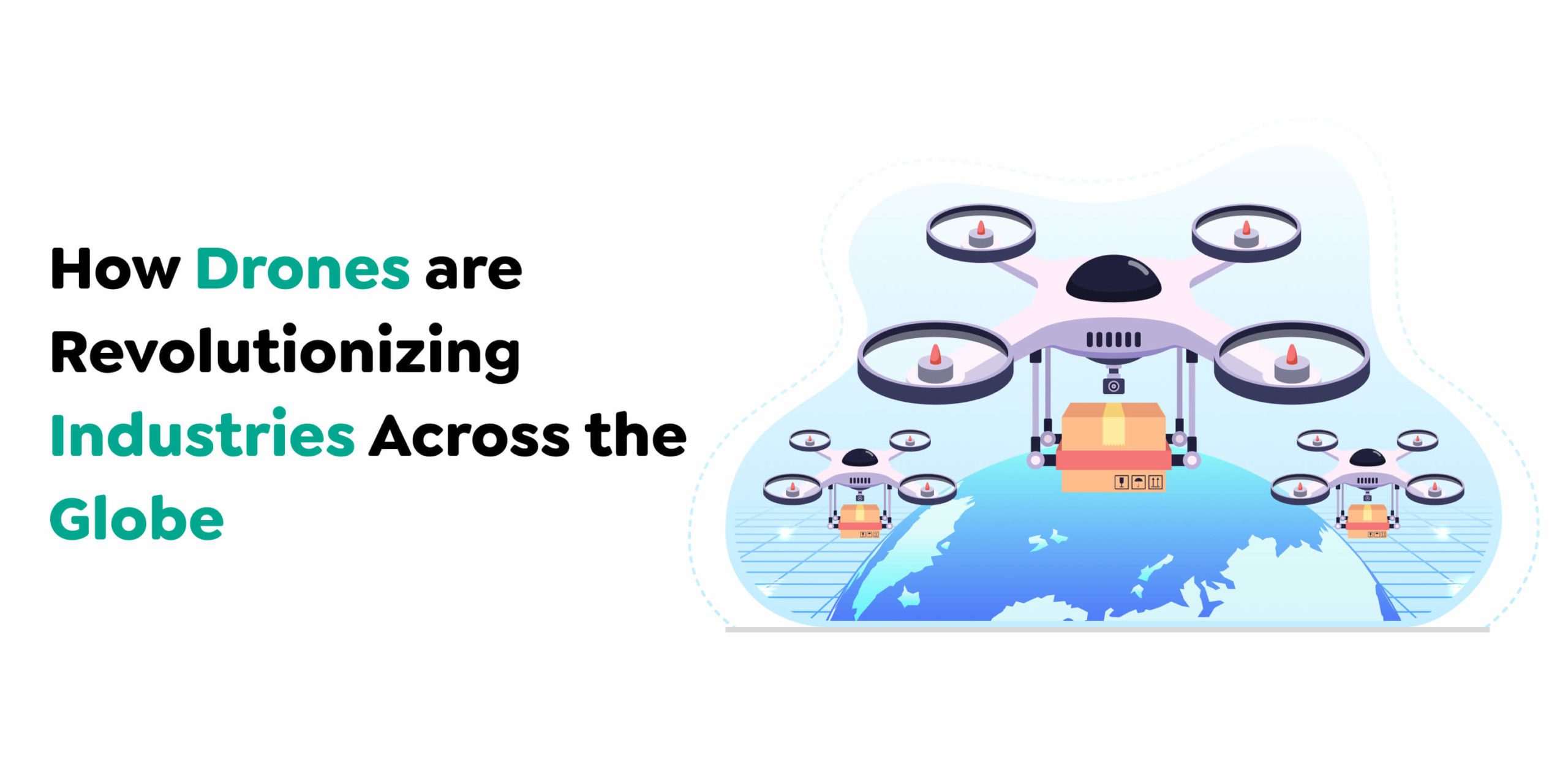
Here are some real-world examples of how drone technology is being applied across different industries:
Construction sites benefit from Skycatch drone solutions, which combine drone photography with high-definition aerial data processing to produce detailed 3D maps. Drones assist with geographic site evaluations, project status tracking, and structure assessment for bridges and skyscrapers. At Turner Construction and similar companies, drones enhance safety measures while speeding up their building projects.
The drone delivery service Amazon Prime Air delivered packages within 30 minutes during experimental testing. The drone system holds packages below 5 pounds while performing flights within a 10-mile radius of fulfillment centers to speed up efficient package delivery.
Through drones, Zipline operates as a medical supply service that transports blood and vaccines to isolated locations throughout Rwanda. Drone delivery reaches remote areas that regular transportation cannot access, which enables emergency medical deliveries to become more effective quickly.
The Ocean Cleanup Project tracks ocean plastic cleanup progress through drones. Through drone aerial imaging detection, teams obtain visual records of polluted sites, which enable them to observe waste accumulation and design optimized clean-up approaches. These drones serve two functions by observing marine organisms, and they can identify illicit fishing practices in the ocean.
Real estate agents and property managers who use DroneDeploy as their drone software platform produce professional aerial images and videos that show properties they market. Aerial drone images give potential buyers fresh insights into a property they are considering. The latest technology enables assessments of rooftops, large structures, and infrastructure to evaluate damage and maintenance requirements.
The MQ-9 Reaper drone is a prime example of U.S. military high-end drone technology that performs surveillance and reconnaissance duties and purpose-driven strikes. The drone’s long flight duration combined with its reconnaissance capabilities has transformed contemporary warfare because it eliminates reliance on piloted aircraft during demanding missions.
Motion-related drone technology enables breathtaking aerial cinematography that reduces the requirements for helicopters and cranes. In Game of Thrones, drones filmed wide-angle aerial shots, improving the show’s visual appeal and cinematic quality.
Allstate utilizes drones to evaluate the properties of insurance claims instead of traditional assessments. Drone assessments generate swift and precise evaluations of residential homes, built structures, and fundamental infrastructure following hurricane destruction, thereby expediting insurance claim validation procedures. The process saves time and reduces financial expenses associated with inspectors’ manual site evaluations.
The World Wildlife Fund makes proactive conservation strides through drones by checking endangered species behaviors and following poachers into remote locations. The thermal cameras on drones enable daylight and nighttime detection of individuals and animals, protecting endangered species.
These examples highlight the diverse applications of drone technology and demonstrate how it improves efficiency, safety, and cost-effectiveness across industries. As technological advances, drones are expected to play an even more significant role in solving complex challenges and enhancing operations in multiple sectors.
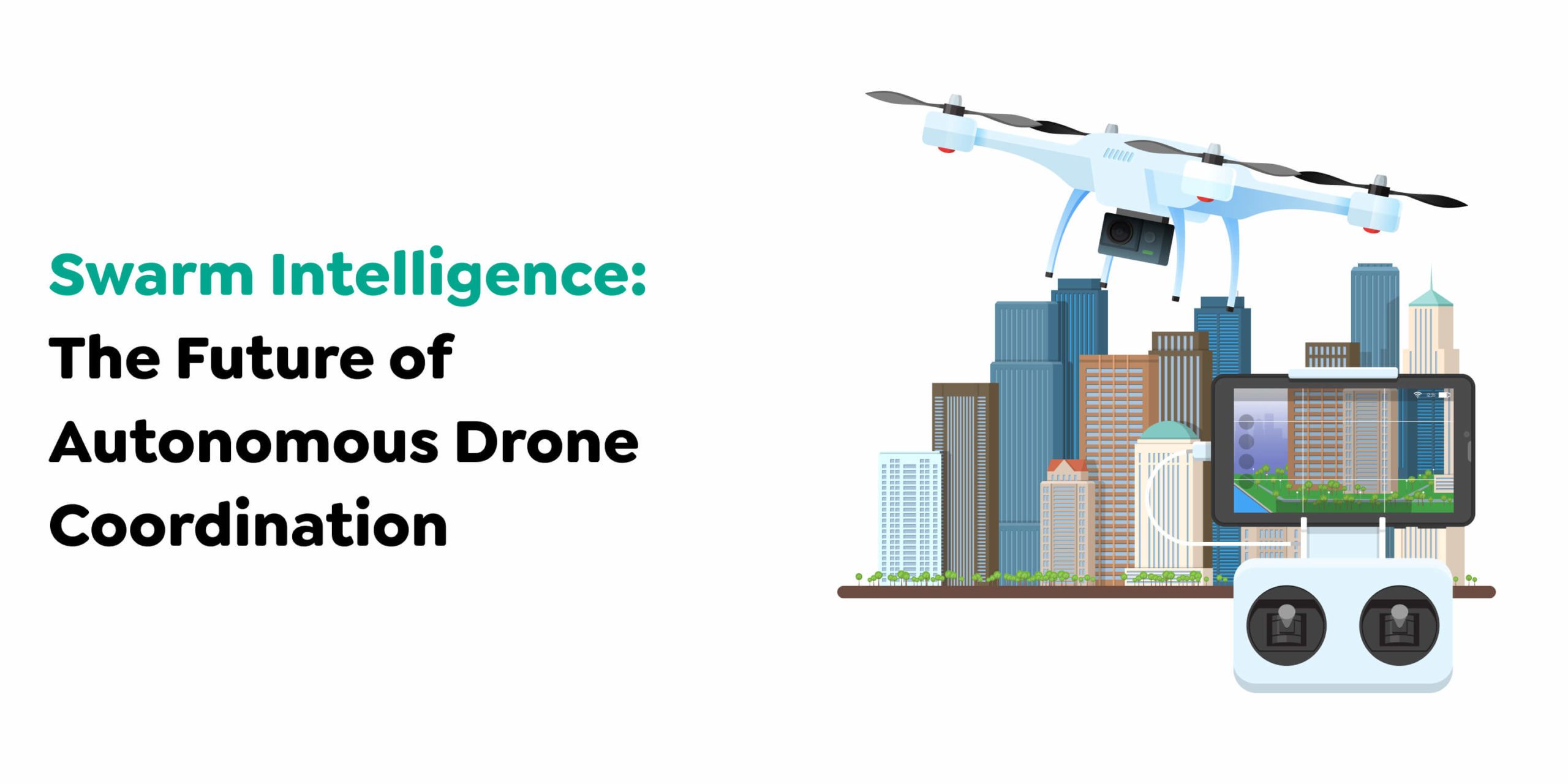
The natural world inspires swarm robotics. For many years, scientists from the geological society have studied the flocking behavior of birds and the orchestrated marching patterns of ants, developing the best drone management software.
The term Swarm Intelligence was first used by Gerardo Beni (in 1989) and Jing Wang (in 1989). This marked the beginning of swarm robots.
Drone swarm software open source is a group of UAVs that communicate with each other to complete a task together.
Experiments at renowned institutions such as Harvard’s Wyss Institute have shown that autonomous swarms of robots are highly capable of various web applications. Drone technology is a way to apply the knowledge from terrestrial robots to flight time.
Based on swarm robots, this innovative approach is a new method of coordinating multi-robot systems. The Drone Swarm is a collection of many robotic systems capable of performing collective behavior generated from interactions between uncrewed airplanes and their environment. This idea was developed in the Intelligence of Artificial Swarms. Biological studies of insects, ants, and other natural species inspired it.
Drone Swarm’s main idea is that UAVs can make decisions based on the information they share. The swarms and flocks of birds or bees inspired this idea. UAVs can perform multiple tasks because they are connected to the same network. To confuse enemy sensors, drone swarm software development can be used in national security to target large numbers of areas.
Everyone wants to increase their Intelligence. They think and like working together, like a bee swarm, fish, or bird flock. They believe they are more intelligent when working in groups than alone. Swarm intelligence is a new form of Intelligence that results from the interconnectedness of natural systems with feedback loops. A swarm is simply a group of brains more intelligent than individual brains. Swarm intelligence is a new area of bio-inspired artificial Intelligence.
Swarm intelligence allows many heads to follow the same mind using multiple senses. The rules are clear, and everyone interacts with one another but not with their environment. This adaptive strategy is only possible with a large number of people. It can schedule, cluster, optimize, and route a group of similar people. Swarm intelligence highlights the task’s relative place in the schedule and uses the summation evaluation method for scheduling. Clustering is the collaboration of all similar individuals within a swarm. For example, a swarm’s UAVs differ from other clusters. Through optimization, it can provide the most cost-effective and efficient solution for all possible outcomes. It is also capable of routing. Swarm drone software mimics the principle of ants, where the forward ants gather information and the backward ones use it.
Swarm intelligence includes the following significant aspects: distribution, stigmergy, cooperation, self-organization, and imitating natural behavior. It is characterized by individuals’ ability to choose and execute their actions. The phenomenon by which agents interact indirectly with environmental alteration is called stigmergy.
This phenomenon allows them to be aware of their environment and disengage from each other. A swarm of UAVs working together is another significant behavior. UAVs work together to solve complex tasks and share their collective Intelligence through swarm intelligence. Self-organization is another aspect of swarm Intelligence or drone swarm software. This behavior can be based on negative feedback, positive feedback, fluctuations amplifying, and other social interactions. Positive feedback refers to the amplification of UAVs that results in better outcomes. Negative feedback is to ensure that all UAVs do not converge similarly.
Self-organization phenomena often observe tension between the feedbacks. This includes complex networks, markets, and cellular automata, among others. The other characteristic of emergence is its strength or weakness. If it is hard to track the individual behavior back to the emergent properties, the emergence is considered weak. The emergence is weak if the emergent properties cannot be traced back to the unique behavior. A swarm of UAVs can be modeled after natural swarm behavior. Swarm behavior is generally defined as foraging, nest building, and moving in the same environment. Imitating natural swarm behavior is another crucial aspect of swarm intelligence.
There are two levels to swarm Intelligence. The first uses a positive feedback hormone to mark shorter routes and provide an entry signal for other people. The second level of swarm intelligence uses a negative pheromone to keep unpleasant ways and give an entry signal for other members.
A swarm generally follows three principles: The quality principle, proximity principle, and diverse response principle are all critical. The basic Swarm can respond quickly to environmental variation caused by their interactions. The quality principle permits a swarm of individuals to react only to certain quality factors, such as location safety. The diversity response principle allows for the design of distributions to protect everyone from any environmental fluctuations. The stability principle limits the ability of a swarm to exhibit a stable response to changes in its environment.
Finally, the adaptability principle describes the sensitivity of a group as its behavior changes in response to environmental changes. These principles include attraction between all people, collision avoidance, and self-organization. They focus on the same direction and become closer to one another during the following interest.
Swarm intelligence refers to individuals’ interactions, activities, and environments within a swarm. There is no direct communication between individuals in swarm drone software. Instead, they can interact with one another through environmental alterations. Environmental alterations are, therefore, an external memory. Work simulation is achieved by combining the stigmergy behavior of all swarm members. The individuals make their decisions using an equilibrium between a perception/reaction model or any random model. They then react and move according to this perception-reaction model while perceiving and affecting the local environment properties.
Some programming languages for swarm intelligence include proto-swarm and swarm. The proto-swarm language uses an amorphous medium abstraction to program the swarm. This formless medium abstraction can be obtained using a language based on Proto’s continuous space-time model and a runtime library that estimates the model on the hardware. A distributed programming language, called a “swarm,” is another language for swarm intelligence. It moves the computation, not the data.
Swarm is an analogy to the Java bytecode interpreter but with a primitive version. It is available as a Scala Library. Star-Logo is a programming language for creating open-source drone swarm software. This language allows you to model real-life scenarios such as market economies, bird flocks, and traffic jams. Finally, programming an amorphous computing medium growth point language is necessary. This language can generate complex, pre-specified patterns, such as the interconnection form for an arbitrary electric circuit.
Swarm intelligence is a critical component of many things, some discussed below. It allows swarm intelligence to respond flexibly to external challenges and internal disturbances. The flock of individuals is autonomous and has no central control. It can be adapted to any situation and offers self-organized solutions. Propagating changes in networks is effortless. These are all good for groups of people.
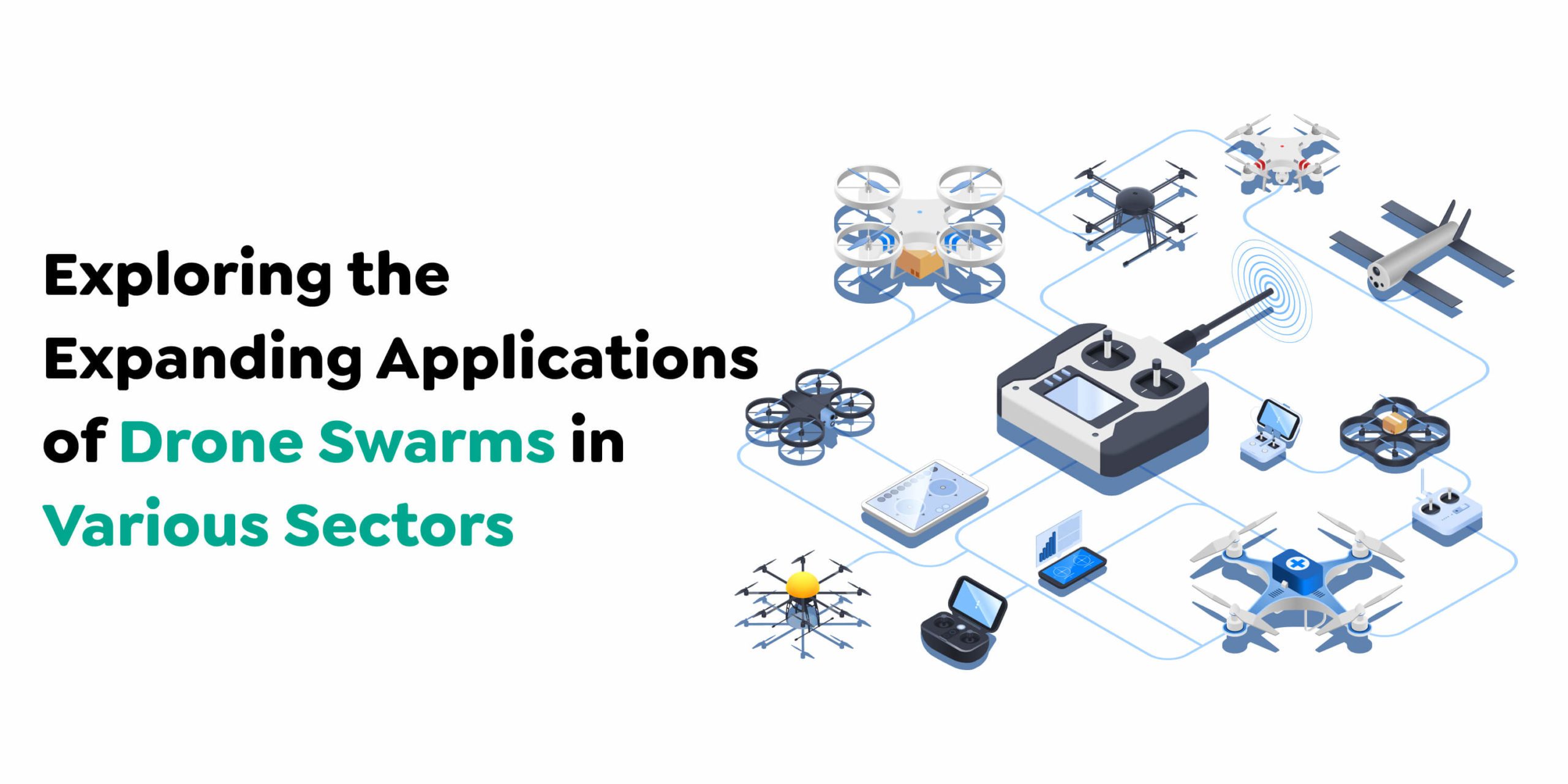
Artificial Intelligence is used in UAVs for many purposes. It allows the drone to identify and attack enemy defenses autonomously. Infrared sensors detect enemy submarines in oceans, and a thermographic camera detects infrared radiation from submarines. In addition, these formations can carry out search and rescue missions across large areas. They can also assist rescue teams by providing a live map of the advanced fire. This information is gathered from multiple sources using temperature sensors and cameras.
This is because many drones can fly simultaneously, and individuals can control them like a single drone. This technology has the most significant advantage of occupying larger areas.
Swarms can accomplish almost all current drone technology tasks. Using many drones instead of one unit will also reduce the time and increase the data required for any given mission.
UAV swarms are receiving considerable attention today. Nation after nation is trying to create working systems that can be used as intelligence-gathering platforms and weapons.
Although commercial applications are not receiving the same financial backing as military projects, they will soon. For example, drone technology developed by defense agencies is expected to trickle down into the commercial sector eventually.
A drone swarm could be a great tool for construction sites. While some drones can take photos to aid project managers, others inspect the building. Additional drones could monitor the site. Others could ensure safety and provide supplies as required.
These could all happen simultaneously without worrying about drone collisions or inefficient movements. There are many possibilities for drone swarms.
Although military applications are the most likely to use the power of swarms first, commercial applications will soon follow. Imagine dozens, if not hundreds, of UAVs, working together towards a common goal.
This modern technology is potent and requires caution. However, it can propel drones to new heights.
Also Read : Why Should You Invest In Drone Detection App Development? Learn Here!
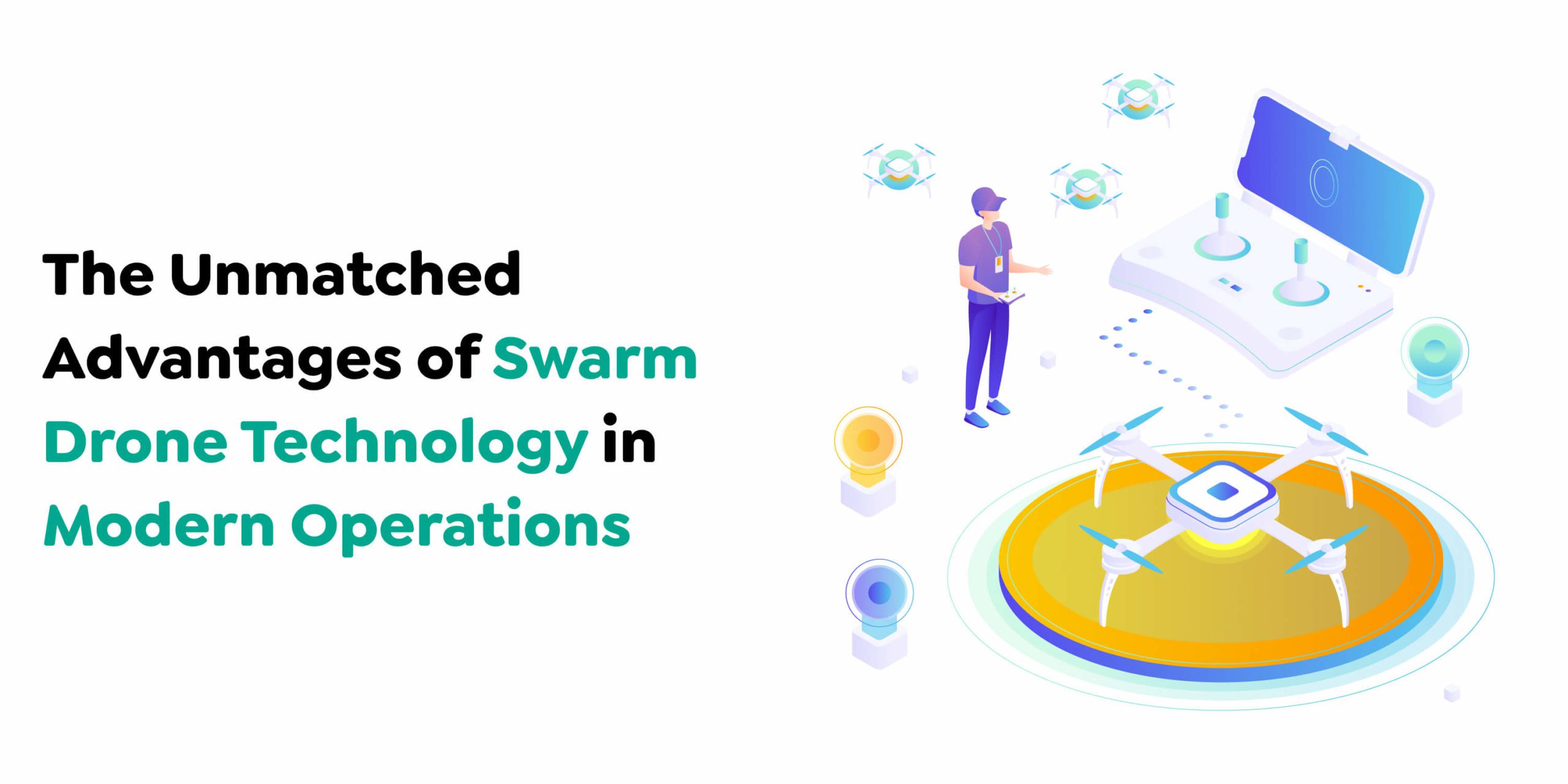
Higher Survivability: Because drones are hard to detect, their chances of survival are much more significant than those of uncrewed aircraft. The Swarm is a network of UAVs that have multiple weapon systems. Even if one or two are detected, the rest will take over the function of those destroyed and shoot down the detected ones. Houthi rebels have shot down a few drones belonging to the US. This shows the system might not withstand a contested battlefield environment with robust AD systems and offensive cyberattack capabilities.
Cost-effective: The Armed Forces have cheaper options, especially if they lack conventional weapon superiority over their enemies. Drone technology is rapidly gaining popularity, and soon, more developers will develop counter-drone technology. Swarm drones will be the dominant technology, and India must stay ahead.
Defeat legacy AD Systems: They can defeat legacy AD Systems effectively, as demonstrated in the Nagorno-Karabakh conflict. This is especially true when there are swarm drone strikes. However, their chances of success against integrated AD Systems of significant powers such as the US, Russia, and China could be better. These systems are interconnected and layered, including long-, medium-, and short-range weapon systems that protect their airspace and land space. For example, even the US systems could not detect the Houthi drone attack against Saudi Oil Company facilities without a networked, layered AD system.
Instead, the Air Defence systems must have electronic warfare (EW) and specialized counter-unmanned systems (CUAS) to defend against Swarm Drone attacks.
Disruptive effect against ground-based weapon systems. The Azeri drones from Turkey and Israel destroyed the Armenian tanks, mechanized infantry vehicles, artillery guns, and limited air defense weapon systems. This proved that such weapons could be effective in a limited AD environment, allowing countries like India to restructure their military capabilities and force structure. A small, conventional force with persistent drone strikes has proved possible to have a deadly and powerful alternative. The Nagorno-Karabakh conflict proved this. Critics might argue that we can operate with impunity after achieving aerial superiority or favorable air conditions. However, this is only partially true when working in a swarm of drone battle spaces. Moreover, tanks will likely have a C-UAS system, similar to an anti-missile system, as their primary weapon platform to ensure security while getting resolution images.
As Michael Kofman, writing in the Moscow Times, highlighted, Terrain and Camouflage had a limited effect on Dispersion. Using onboard sensors and reconnaissance equipment, drones overcame terrain and camouflage advantages. Dispersion tactics were also defeated thanks to mass drone employment and loiter capability. The Armenian Armed Forces could not defeat the Azeris, who had a more significant number and were more skilled due to Turkey’s strong support and sometimes even limited Israeli support.
It will take time to fully assimilate the new technologies and develop indigenous tactics. Although several have been using drones in surveillance at the border and counter-terrorism operations, many drones are at the Army Day parade as highly advanced, autonomous, and armed UAVs and ensure strategic independence.
Under the fast-track process of acquiring new-age weapons, the armed forces signed agreements with Indian defense companies and startups. As a result, the military can quickly deliver domestic systems to the frontline.
The Army has placed an order worth INR 200 crore with Indian startups for swarm drones. This move will lead to the Army becoming the leader in this emerging technology. NewSpace Research and Tech have been chosen for the contract.
NewSpace Research also collaborates with Hindustan Aeronautics Limited to develop a futuristic air-launched drone system called Combat Air Teaming System.
Technology-driven weapons and systems are replacing conventional warfare. It’s only a matter of time until modern technology outpaces existing warfare tactics and warfare becomes more tech-driven. The Government of India believes that “Victory smiles upon those who anticipate changes like war, and not upon those who wait until they adapt themselves after they occur.” In keeping with the idea, it addresses the changing dynamics of war and equips the nation for what lies ahead of strategic independence.
Drone Swarms have seen combat before, but in minimal circumstances and with few participants. Suspected Islamist rebels attacked two Russian bases in January 2018. Houthi rebels’ subsequent attack on major oil facilities in Saudi Arabia in September 2019 caused significant damage. These are two examples of how the world can use drone swarms effectively. Drone swarm technology is a large group of Micro/Mini Drones/UAVs that autonomously make confident decisions based on information. This can revolutionize conflict dynamics, and the world is getting closer to experiencing this potential with resolution images.
Swarming technology can cause structural changes to drones by installing mission payloads onto multiple drones. The US, UK, and China have successfully tested these applications, showing a swarm of 1000 drones at Guangzhou’s Lantern Festival 2018, setting a Guinness World Record. In addition, the US has a whole research program explicitly dedicated to developing autonomous swarms. It is called “Low-Cost Unmanned Aerial Vehicle Swarming Technology” (LOCUST). The military will find significant applications for swarms in nearly all national security areas, including ISR missions on land, air, and sea, identification of hostile surface-to-air missiles, and anti-drone weapon systems. They also detect nuclear, biological, and chemical radiations and are far more cost-effective than larger, conventional weapon systems.
This is where the danger lies for Non-State Actors and Terrorist entities using this trending technology to achieve their narrow goals, thus posing a grave risk to the nation-state because of the low cost and ease with which they can acquire and arm small drones.
India has already made some progress in this area, but much must be done. Many startups can design and develop mini and micro drones. Establishing a Drone Directorate at the Ministry of Civil Aviation will boost several startups. There are over 30 companies that are currently involved in the development and design of micro/mini drones. HAL and New Space Research & Technologies are working together on developing a prototype for swarm drones, the ALFA-S (Air Launched Flexible Asset-Swarm). These can be packed into containers and launched from an aircraft for spatial resolution.
Also Read : Leveraging Drones for Livestock Management: Essential Best Practices
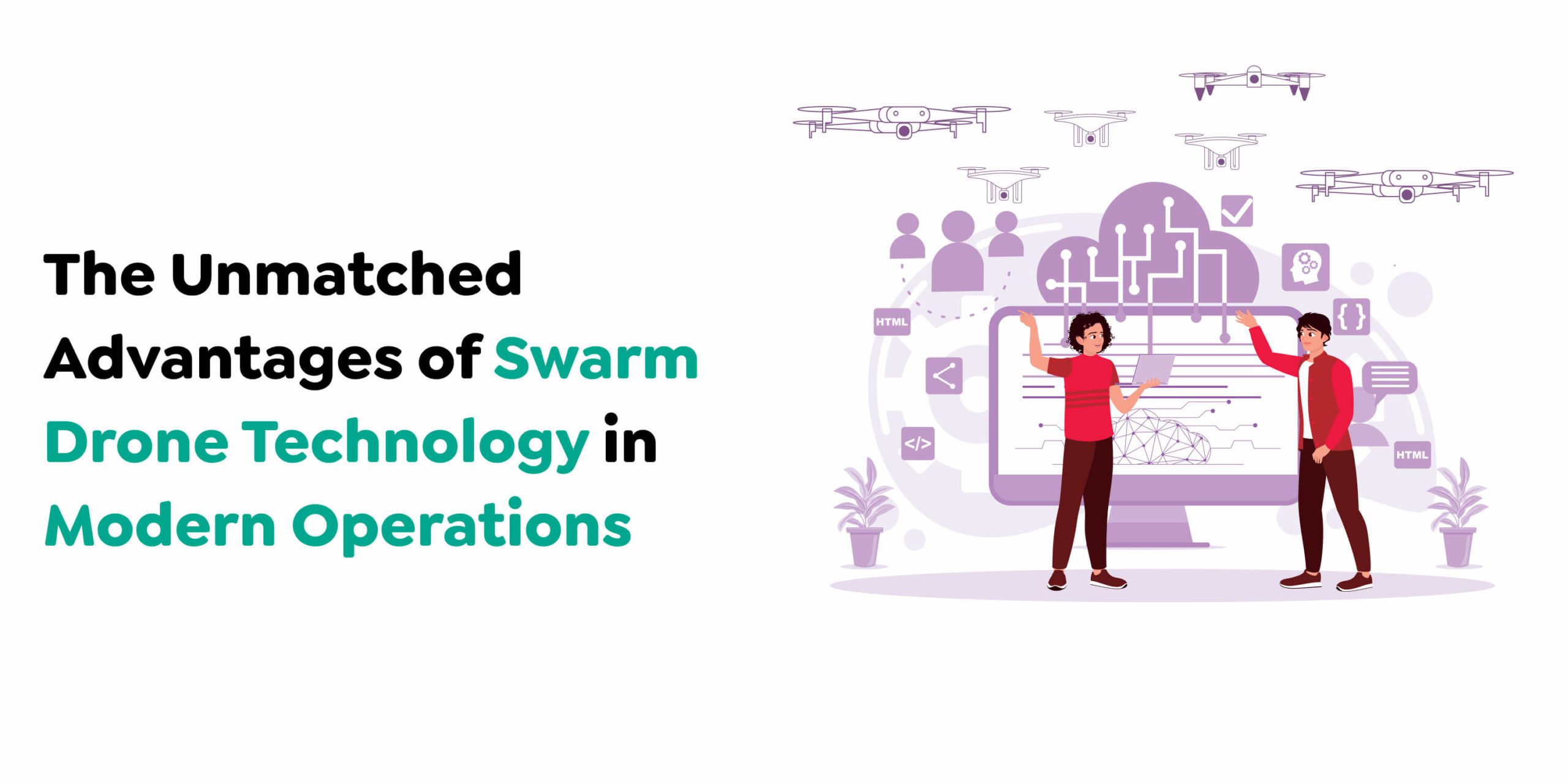
Techugo is a drone app development company where mobile app developers can help you build swarm drone software by leveraging its expertise in drone technology, software development, and system integration. Here’s how Techugo can assist in the development of swarm drone software:
Techugo can create bespoke software tailored to the specific needs of your swarm drone system. This includes developing algorithms for communication between drones, coordinating multiple drones in real-time, and automating flight paths.
Building swarm drone software requires reliable and low-latency communication between drones. Techugo can implement communication protocols like mesh networking, which ensures seamless data exchange among drones without interference, even in challenging environments.
Hire artificial intelligence developers From Techugo can integrate AI and machine learning into the swarm drone software to enhance decision-making and autonomous behavior. AI algorithms can be used for path planning, obstacle detection, collision avoidance, and adaptive decision-making for swarm behavior.
Developing a centralized or decentralized control system for the drones is crucial for managing multiple drones simultaneously. Techugo can design systems that allow real-time control over drone movements, ensuring synchronization and precision in mission execution.
Swarm drones generate massive amounts of data. Techugo can create a cloud-based platform to store, manage, and analyze data collected by drones, making it easy to access real-time data, flight logs, and environmental observations from the swarm.
Before deployment, it is essential to simulate the behavior of the swarm drones to test their performance in various environments and scenarios. Techugo can develop simulation software that helps visualize and test drone swarm interactions, identifying potential issues before live deployment.
Techugo can incorporate security features into the swarm drone software to ensure data encryption, secure communication channels, and fail-safes that guarantee safety and reliability. These security measures are essential to prevent hacking, unauthorized access, or interference during operations.
Swarm drones operate in complex airspace environments, and the software must comply with local aviation laws and regulations. Techugo can ensure the software meets compliance standards and integrates with necessary airspace management systems.
Techugo can help integrate swarm drone software with other platforms or technologies, such as GIS systems, monitoring stations, or autonomous vehicles, to expand the software’s functionality and support multi-system operations.
Techugo provides ongoing maintenance and support for swarm drone software, ensuring that the system continues to operate efficiently as technology evolves and new updates or improvements are needed.
By leveraging these capabilities, full-stack developers of Techugo ensure that your swarm drone software is efficient, scalable, and capable of performing complex missions across industries like agriculture, logistics, surveillance, and more.

Thanks to technology, the military’s use of UAVs is expanding uniquely. The critical technology needed to advance UAVs to the next stage is a robust sense and avoidance system that allows uncrewed planes to fly safely in congested airspace. In addition, future UAVs will be capable of performing a wide range of tasks beyond their current roles in ISR, strikes, and combat search and rescue.
Unmanned must develop these technologies. Contact Us aircraft will be used in complementary roles to increase the combat potential of the armed forces. Swarm Drone Technology, the new player on the block, will significantly impact any future conflict, especially in India—the —theory, both private and public. Get in touch today with a top AI development company, Techugo, to hear from our experts about warm drone software.
Write Us
sales@techugo.comOr fill this form